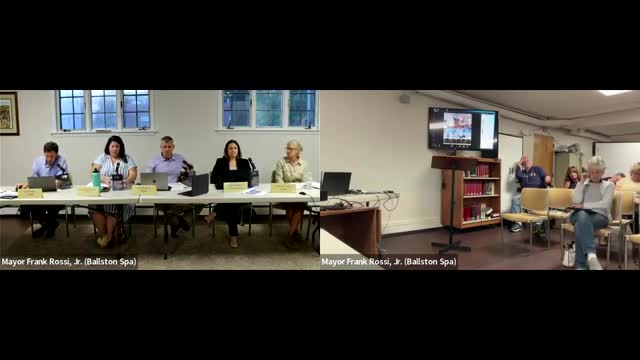Debate ignites over sidewalk access and public assembly rights
August 12, 2024 | Ballston Spa, Saratoga County, New York

This article was created by AI summarizing key points discussed. AI makes mistakes, so for full details and context, please refer to the video of the full meeting. Please report any errors so we can fix them. Report an error »

In a recent government meeting, significant discussions centered around the contentious sidewalk blocking clause, which has raised concerns regarding public safety and constitutional rights. The debate highlighted the ongoing conflict between established standards for sidewalk accessibility and proposed regulations that some officials argue could infringe on citizens' rights to assemble peacefully.
One key point raised was the adherence to the Americans with Disabilities Act (ADA), which stipulates a minimum sidewalk width of five feet for reasonable access. Trustee Raymond, who was unable to attend the meeting, emphasized the importance of following these established standards, citing decades of research by experts in the field. He expressed frustration over the resistance to adopting these guidelines, warning that the current proposals could force individuals into the streets during public events, creating unsafe conditions.
The discussion also touched on the legal implications of the proposed regulations, with concerns that they could violate constitutional rights. Critics argued that allowing property owners to dictate who can occupy public sidewalks could lead to unequal enforcement and discrimination against certain groups. The notion of \"cherry-picking\" enforcement was highlighted, suggesting that the law should apply uniformly to all citizens, not just those deemed acceptable by business owners.
In contrast, some officials defended the proposed regulations, arguing that they are necessary for public safety. They pointed out that the 15-foot blocking rule was derived from other codes and aimed to prevent situations where individuals could obstruct entrances or create hazards during events. The officials maintained that the law does not prohibit standing on sidewalks but rather seeks to ensure that public access is not impeded.
The meeting concluded with a recognition of the need for further dialogue to balance public safety with the rights of individuals to gather and express themselves in public spaces. The ongoing debate reflects broader tensions between regulatory measures and civil liberties, underscoring the complexities of governance in maintaining both order and freedom in community spaces.
One key point raised was the adherence to the Americans with Disabilities Act (ADA), which stipulates a minimum sidewalk width of five feet for reasonable access. Trustee Raymond, who was unable to attend the meeting, emphasized the importance of following these established standards, citing decades of research by experts in the field. He expressed frustration over the resistance to adopting these guidelines, warning that the current proposals could force individuals into the streets during public events, creating unsafe conditions.
The discussion also touched on the legal implications of the proposed regulations, with concerns that they could violate constitutional rights. Critics argued that allowing property owners to dictate who can occupy public sidewalks could lead to unequal enforcement and discrimination against certain groups. The notion of \"cherry-picking\" enforcement was highlighted, suggesting that the law should apply uniformly to all citizens, not just those deemed acceptable by business owners.
In contrast, some officials defended the proposed regulations, arguing that they are necessary for public safety. They pointed out that the 15-foot blocking rule was derived from other codes and aimed to prevent situations where individuals could obstruct entrances or create hazards during events. The officials maintained that the law does not prohibit standing on sidewalks but rather seeks to ensure that public access is not impeded.
The meeting concluded with a recognition of the need for further dialogue to balance public safety with the rights of individuals to gather and express themselves in public spaces. The ongoing debate reflects broader tensions between regulatory measures and civil liberties, underscoring the complexities of governance in maintaining both order and freedom in community spaces.
View full meeting
This article is based on a recent meeting—watch the full video and explore the complete transcript for deeper insights into the discussion.
View full meeting
